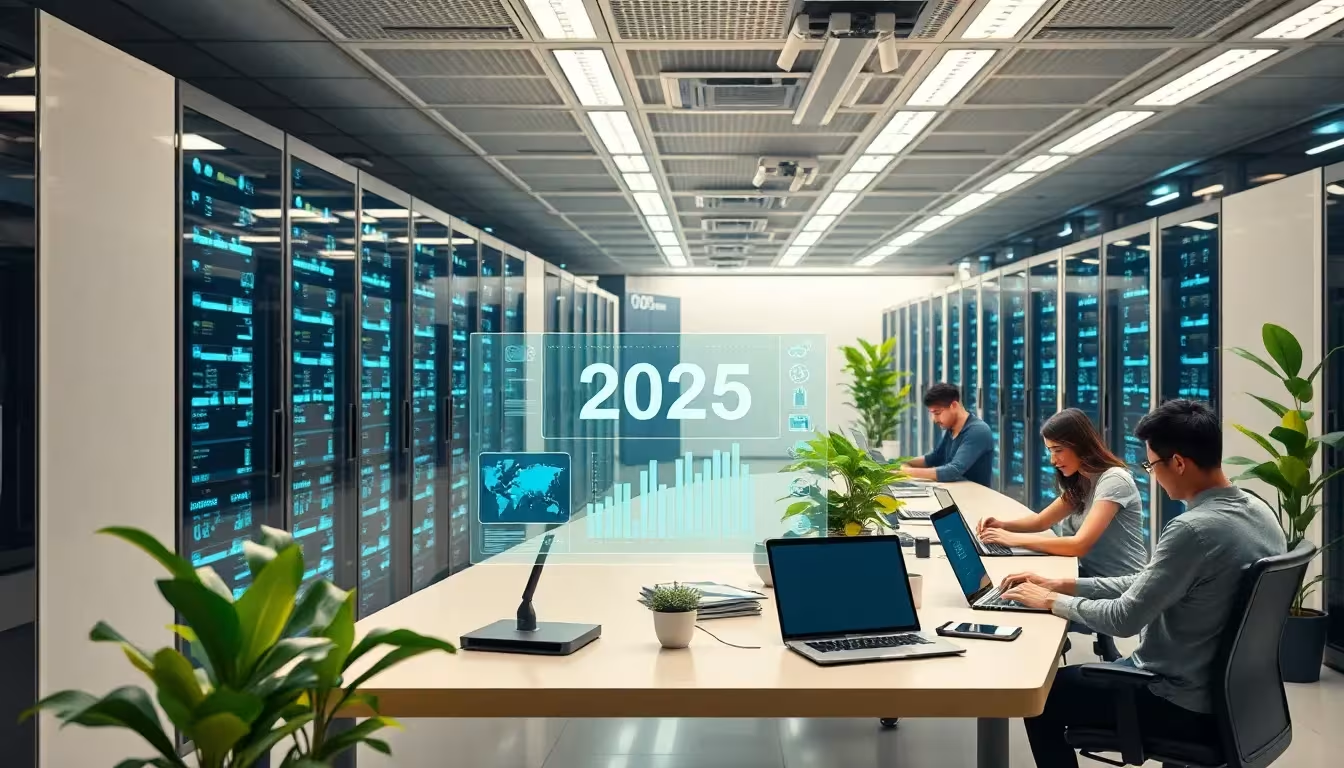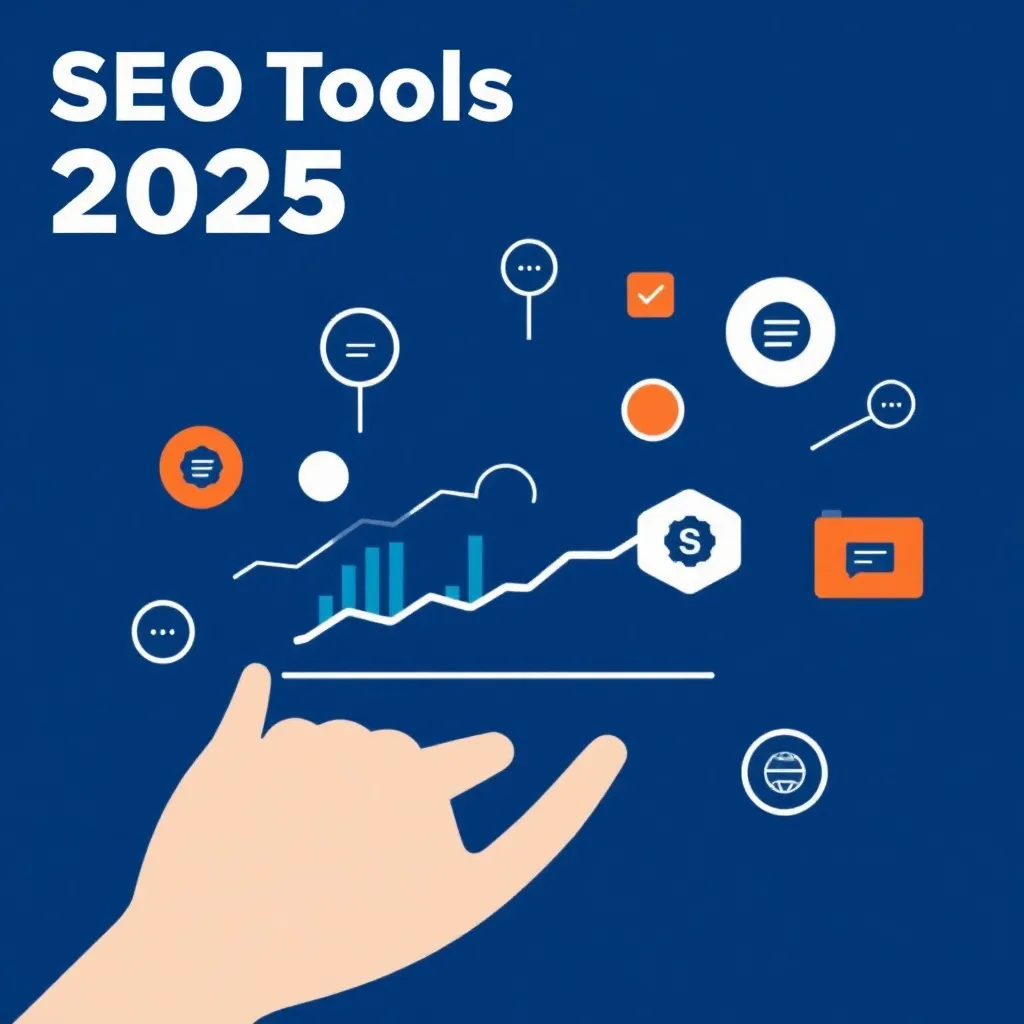Web hosting trends 2025 show a technological evolution based on artificial intelligence, sustainability and cloud power. If you want to keep up in 2025, you need to focus on automation, flexible architectures and security strategies.
Key points
- Artificial intelligence Automated maintenance and safety
- Sustainability becomes a decision-making aid for hosting providers
- Edge Computing Increases loading speed and user experience
- Cloud models offer flexible scaling
- Serverless hosting brings cost savings and developer freedom
In addition, the demands on the flexibility of hosting solutions are growing rapidly. Companies are increasingly relying on powerful combination solutions to implement more specialized projects. Factors such as regional data storage, legal requirements and the ability to quickly adapt server capacities also play a role here. As a result, the focus is shifting more towards configurable tariffs and modular offers that can be scaled at any time. The ability to provide new resources within a short space of time or to use existing capacities effectively is becoming a clear competitive advantage. This is creating a market in which service and individual advice are crucial in addition to technology and performance.

Artificial intelligence as a strategic lever
Artificial intelligence will fundamentally change the web hosting landscape in 2025. It will take over routine processes, monitor resources in real time and identify potential problems before they arise. Predictive maintenance significantly reduces downtimes. Its use in security management is particularly exciting: AI can be used to automatically fend off attempted attacks. Choosing the right hosting should be based on AI integration and smart admin tools pay attention.
In addition to traditional monitoring, AI-supported analysis tools form a basis for ensuring optimal resource distribution. Dynamic load balancing, for example, distributes the workload of several servers more precisely, resulting in a noticeable increase in performance. At the same time, new ways of communicating with customers are opening up: thanks to intelligent chatbots and automated assistance systems, hosting providers can guarantee high-quality customer support around the clock. Powerful AI solutions independently detect anomalies, activate additional security levels or carry out automated updates. This not only relieves the burden on administrators, but also shortens response times in the event of an acute need. This makes AI a key driver for making complex hosting infrastructures more efficient and stable in the long term.
Sustainability: a competitive criterion
Companies prefer web hosting providers that use resource-saving technologies. CO2 compensationThe use of renewable energies and optimized data centers have a direct impact on the ecological balance sheet. Customers are also paying more attention to the environmental aspects of hosting. Providers who disclose climate-relevant key figures gain a clear advantage. Hosting solutions such as green hosting have a noticeable influence on purchasing decisions.
In addition to the pure use of renewable energy sources, energy efficiency is also becoming increasingly important in data centers. Optimized cooling, smart temperature control and intelligent sensor technology can significantly reduce energy consumption. In addition, there are technologies that reduce the use of hardware at lower capacity, for example by automatically switching off server resources that are not required. Some hosts also rely on regional partnerships in order to keep an eye on both shorter supply chains and low energy consumption. It is also interesting to reuse waste heat, for example to heat offices or communal areas. These concepts, which are becoming increasingly established, promote a holistic way of thinking in the hosting sector, in which the environment, costs and technology work together symbiotically.

Edge computing and CDNs
Edge computing enables data processing directly in the vicinity of the end user. This reduces loading times and ensures a smoother user experience - especially for real-time services such as interactive maps, chats or augmented reality applications. Content is distributed intelligently in conjunction with global CDNs (content delivery networks). The decisive factor here is proximity to the user - fewer central servers, more decentralized nodes. This development increases the Data availability and reduces infrastructure costs.
Alongside the growing spread of 5G networks, edge computing is able to operate applications with virtually zero latency. This also creates new opportunities for data-intensive applications such as virtual reality environments or IoT (Internet of Things) solutions in which sensors continuously send and receive data. Companies are increasingly relying on local micro data centers that are located in metropolitan areas, for example. This ensures extremely fast data processing, which traditional, centralized models are often no longer able to deliver. Edge computing also reduces the load on the core network and ensures reliability by no longer bundling critical processes at a single location. All in all, this leads to a changed hosting paradigm in which speed and availability almost always have the highest priority.
Multi-cloud as the new reality
Hybrid cloud models and multi-cloud strategies will prevail across the board in 2025. Companies will combine different cloud providers in order to benefit from strengths such as regional flexibility, specific compliance requirements or lower costs. More and more providers offer simple control thanks to APIs and web dashboards.
In the following table, we compare the advantages of popular cloud models:
| Cloud model | Advantage | Operational scenario |
|---|---|---|
| Private cloud | High control and data protection | Banks, insurance companies, internal data analysis |
| public cloud | Scalability and easy to use | Webshops, start-ups, SaaS applications |
| hybrid cloud | Flexibility between public and private | Projects with data protection requirements |
| Multi-cloud | Redundancy and provider independence | Large companies, resilience strategies |
The widespread use of the multi-cloud also increases the complexity of managing these distributed systems. DevOps teams need to use orchestration tools to move containers, microservices and data flows seamlessly between the various cloud environments. Standards such as Infrastructure as Code (IaC) are often used to automate provisioning and deployment. This often results in a highly decoupled infrastructure that can also be expanded very flexibly. There is also the issue of compliance: depending on the industry segment, different regions and service levels may be required, which in turn require a specific cloud provider. As a result, we are seeing that the multi-cloud strategy is unleashing a new kind of agility in the hosting world and slowing down or even replacing traditional monoliths.

Safety standards in transition
Cyber threats continue to increase - 2025 is the year Zero Trust at the heart of new security strategies. Users and devices have to authenticate themselves each time they access the system. Intelligent firewalls analyze data streams in real time. Hosting providers are increasingly relying on encrypted container environments. Anyone who processes sensitive customer data cannot avoid proactive security.
In addition, the concept of "security by design" is becoming increasingly important. Security tools are integrated as early as the application development stage, while at the same time all access rights are managed in detail. This approach requires close cooperation between developers, administrators and security experts in order to close potential gaps in the code at an early stage. More and more companies are also bringing external penetration testers on board to evaluate attack vectors under realistic conditions. In addition, the continuous further development of encryption standards is coming to the fore. Aspects such as quantum-safe encryption are generating discussion, as some providers are already preparing for potential threats from quantum computers. Overall, the topic of security is becoming more of an ongoing process than a one-off certification.
Serverless applications and new development freedom
Thanks to serverless technologies, there is no need to manage traditional infrastructures. Developers only program the function - the hosting platform takes care of the rest automatically. This means: pay-per-use, automatic scaling and reduced operating costs. Microservices make applications more modular. This approach is ideal for high-growth projects.
New services can be implemented and tested quickly, especially in fast-moving industries. Instead of updating large monoliths, small functional modules are integrated into the overall architecture. Errors can be isolated and rectified more easily in such microservices environments - a significant advantage over conventional systems, where a single change can jeopardize the entire operation. Serverless platforms are increasingly cloud-agnostic, making it even easier for companies to integrate their services into a multi-cloud. In addition, many providers supply tools for version management, scaling control and automated monitoring. This creates a very dynamic development environment in which teams can work more agilely and creatively. At the same time, capacities can be deployed with pinpoint accuracy, which saves costs, especially when workloads fluctuate greatly due to seasonal or campaign-related factors.

Flexible hosting offers for individual projects
Companies do not want rigid tariffs. Instead, they need hosting solutions that are tailored to project size, traffic and technical expertise. Some providers rely on modular building blocks with which components such as storage, bandwidth or support level can be adapted. If you want to take a look at examples of successful models, you can find them in the current web hosting comparisons from IONOS exciting approaches.
It's not just about the pure technical equipment, but also about additional services such as monitoring, support or integrated security solutions. For example, many companies require automated deployments or seamless integration with existing development environments. DevOps services can also be part of flexible packages in order to get updates onto live servers more quickly. In addition, payment models that are based precisely on consumption are becoming increasingly important. In this way, cost peaks can be cushioned and projects can be planned in line with demand. All in all, the offer is shifting away from rigid bronze, silver and gold tariffs towards individual resource plans that can often be expanded on a daily basis. The result: more freedom and less risk, but also a greater need for professional advice on configuration and optimization.
Practical examples and user experiences
Many medium-sized companies report positive experiences with new hosting technologies. Whether through more efficient loading times, less maintenance effort or a lower CO2 footprint - the dynamic pays off. Smaller projects also benefit, for example through active resource monitoring or simplified UI interfaces. In an independent field report on 1blu Webhosting for example, praises the simple switch to serverless hosting.
In addition, collaborative exchange in forums and community platforms is proving to be a valuable tool for identifying pitfalls even before the project starts. For example, development teams report reductions in operating times when using AI-supported monitoring tools. Others appreciate the ability to test various security plugins in real time and receive immediate analytics data. Many are also pleasantly surprised at how seamlessly legacy applications can be migrated to hybrid infrastructures when the right automation tools are used. This pool of knowledge from experience reports acts as an accelerator for future hosting innovations: Sources of error are identified earlier, best practices become established more quickly and new trends can be evaluated in an open dialog.

Using trends with foresight
I observe: Who today in intelligent hosting solutions saves time and money tomorrow. The 2025 trends interlock and make web hosting faster, more secure and more sustainable. Small companies in particular will gain access to technologies that were previously only available to large companies. With targeted provider selection, everyone can actively steer this development and benefit from it.
In the long term, the technical management of these highly dynamic hosting environments will also be greatly simplified. Thanks to automated error management and reliable resilience strategies, the internal IT team in particular will be relieved. Whether AI-based security mechanisms, edge computing in combination with CDNs or the intelligent booking models in multi-cloud environments: All of these factors combined are driving the market towards increasingly flexible structures. Experienced providers will respond to this by focusing even more strongly on innovative customer solutions and personal advice. This makes it clear that web hosting will remain a decisive factor for successful web projects beyond 2025 thanks to continuous further development. Those who recognize the potential and make clever use of it can generate high added value for their own business - and set a successful course for the future.




